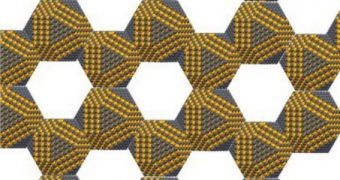A collaboration of European research centers and institutes announces the development of an interesting form of artificial graphene, which is put together from nanometer-thick semiconductor crystals. The new material is not one-atom thick, but is extremely thin in its own right.
The new study was led by scientists at the University of Luxembourg, but included researchers from the Institute for Electronics, Microelectronics, and Nanotechnology (IEMN) in Lille, France; the Debye Institute for Nanomaterials Science and the Institute for Theoretical Physics at the University of Utrecht, in the Netherlands; and the Max Planck Institute for the Physics of Complex Systems, in Dresden, Germany.
The new type of ultra-thin super-material has tremendous applications for improving existing technologies, and even bringing about new types of electronics that will be smaller, lighter and faster than anything available today, AlphaGalileo reports.
At the same time, the new crystal-based material will allow for the development of advanced optical devices, including LED lights, new photovoltaic cells and improved lasers. Details on the new study appear in a recent issue of the leading scientific journal Physical Review X.
This investigation marks the first instance of using traditional semiconductor materials to create a graphene-analog material. Scientists are very interested in synthesizing such a structure because they want to replicate at least some of graphene's properties, without going through the hassle of actually having to obtain the 2D carbon compound through complex processes.
In addition to being extremely strong and resilient, graphene is also transparent, flexible and highly-conducting. It was first obtained at the University of Manchester, in 2004, and material scientists around the world have been trying to understand it and its properties ever since.
The crystal-based material retains the hexagonal structure of graphene, except it replaces the pure carbon atoms with semiconductor crystals. This naturally means that the resulting sheet is no longer one-atom thick, but it remains thin enough to enable multiple advanced applications.
Unlike carbon atoms in graphene, the size, shape and chemical nature of the nanoscale crystals making up the new material can be varied according to the applications being targeted. This degree of customization is likely to come in handy as new technologies are being developed.
“Artificial graphene opens the door to a wide variety of materials with variable nano‐geometry and ‘tunable’ properties,” comments professor Ludger Wirtz, who holds an appointment as the head of the Theoretical Solid-State Physics group at the University of Luxembourg.

 14 DAY TRIAL //
14 DAY TRIAL //